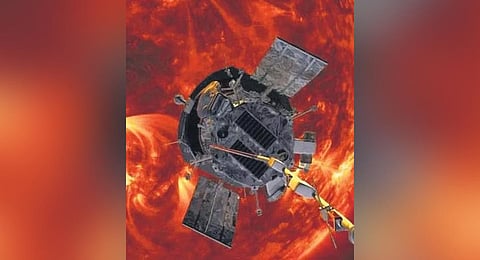

BENGALURU: India’s first solar mission Aditya-L1’s key payload to monitor solar winds and coronal mass ejections (CMEs), Aditya Solar Wind Particle Experiment (ASPEX), has begun its operations, the Indian Space Research Organisation (ISRO) announced on social media platform ‘X’ on Saturday with the payload’s one of two cutting edge instruments releasing indicative data.
The ASPEX comprises two cutting-edge instruments — the Solar Wind Ion Spectrometer (SWIS) and Supra Thermal and Energetic Particle Spectrometer (STEPS). ISRO shared findings of SWIS taken from ASPEX with a histogram illustrating the energy variations in proton and alpha particle counts captured by it over two days.
Solar winds are the continuous flow of charged particles from the Sun which permeate the solar system, while CMEs are large expulsions of plasma and magnetic field from the Sun’s corona. CMEs carry billions of tons of coronal material and carry an embedded magnetic field that is stronger than the background solar wind interplanetary magnetic field strength.
Isro explained that SWIS, utilizing two sensor units with a 360-degree field view of each, operates in planes perpendicular to each other. The instrument has successfully measured solar wind ions, primarily protons and alpha particles. A sample energy histogram acquired from one of the sensors over two days in November 2023 illustrates variations in proton (H+) and alpha particle (doubly ionized helium, He2+) counts. These variations were recorded with nominal integration time, providing a comprehensive snapshot of solar wind behaviour, said an ISRO release.
The change in the proton and alpha particle number ratio that was observed by SWIS reveals the indirect information about the arrival of the coronal mass ejections at the Sun-Earth Lagrange point L-1 (the point where the gravitational pulls of each negate the other). The enhanced alpha-to-proton ratio is often regarded as a sensitive marker of the passage of interplanetary coronal mass ejections at the L1 and hence considered to be crucial for space weather studies.
SWIS was activated on November 2, exactly two months after Aditya-L1 Spacecraft was launched from Sriharikota.
ISRO also said the directional capabilities of SWIS enable precise measurements of solar wind protons and alphas, contributing significantly to addressing longstanding questions about solar wind properties, underlying processes, and their impact on Earth.